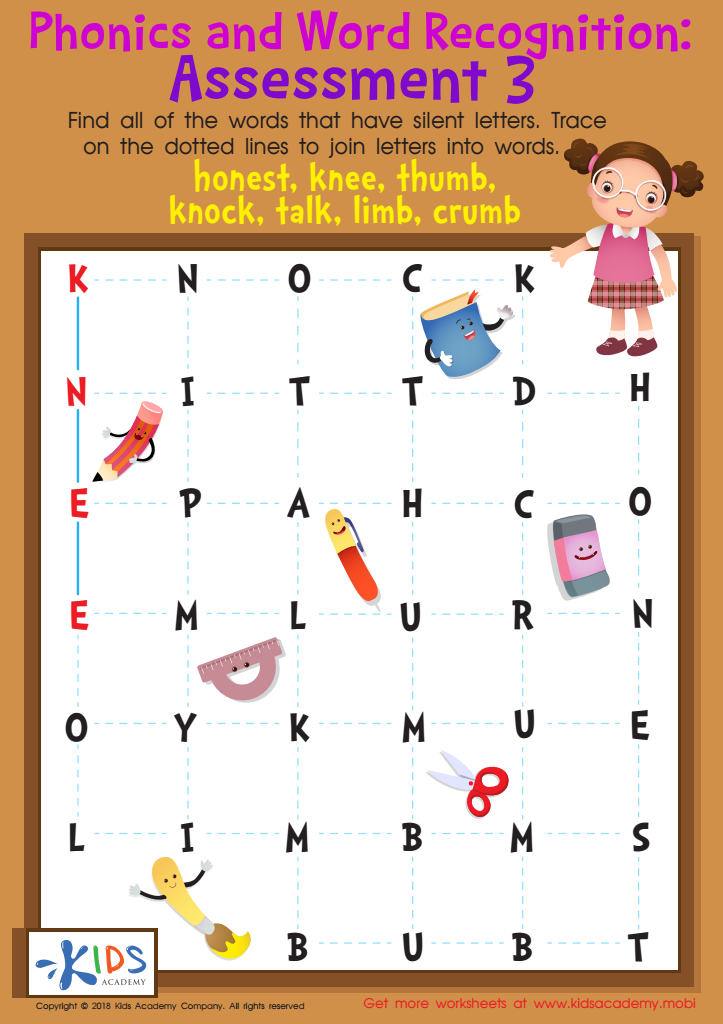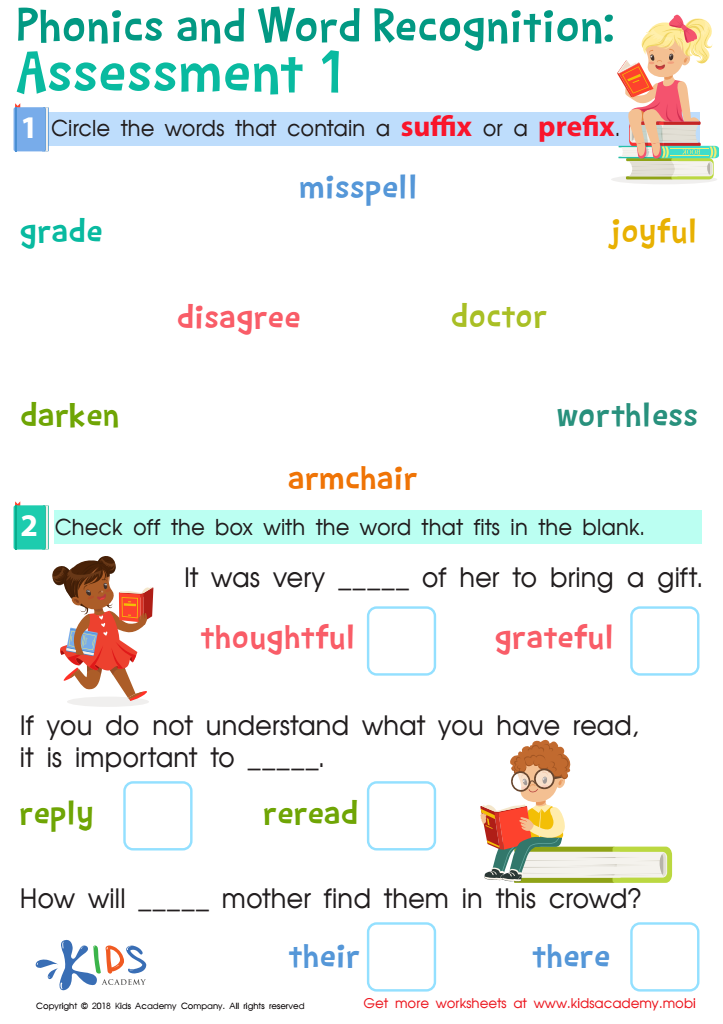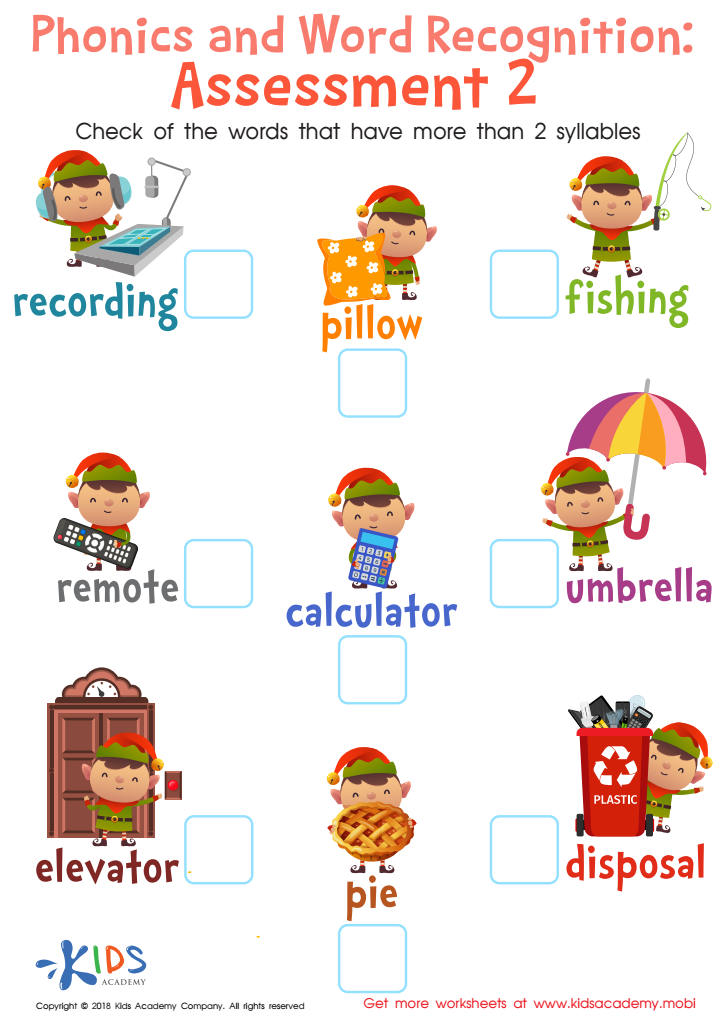Normal Phonics worksheets activities for 9-Year-Olds
3 filtered results
-
From - To


Phonics and Word Recognition: Assessment 3 Worksheet


Phonics and Word Recognition: Assessment 1 Worksheet


Phonics and Word Recognition: Assessment 2 Worksheet
Normal Phonics worksheets activities are a cornerstone in the journey of learning to read and write effectively. These structured exercises not only introduce young learners to the basic building blocks of language but also enhance their ability to decode words, which is essential for literacy. Let's delve into why these activities are so useful in educational settings.
Firstly, Normal Phonics worksheets activities provide a systematic approach to learning. They start with simple concepts, such as recognizing letters and their corresponding sounds, and gradually progress to more complex tasks like blending sounds to form words and eventually reading full sentences. This step-by-step progression ensures that students can build on their knowledge without feeling overwhelmed, making the learning process both efficient and enjoyable.
Moreover, these worksheets are incredibly versatile. They cater to various learning styles, whether a child learns best through visual cues, hands-on activities, or auditory reinforcement. By integrating pictures, puzzles, and opportunities for oral responses, Normal Phonics worksheets activities engage students on multiple levels, reinforcing their learning through different sensory inputs.
Another significant benefit is the reinforcement of learning. Practice makes perfect, and these worksheets provide ample opportunities for students to practice what they've learned. Repetition aids in solidifying the connection between sounds and their visual representations, which is crucial for developing reading fluency.
Furthermore, Normal Phonics worksheets activities can be easily tailored to individual learning paces. Students who grasp concepts quickly can move on to more challenging tasks, while those who need more time can benefit from additional practice on specific areas. This adaptability ensures that all students can progress at a pace that suits their learning needs.
In conclusion, Normal Phonics worksheets activities are invaluable in the realm of literacy education. They offer a structured, versatile, and personalized approach to learning that not only makes the process of acquiring reading and writing skills more engaging but also more effective. By laying a solid foundation in phonics, these activities pave the way for lifelong literacy success.

 Assign to the classroom
Assign to the classroom











